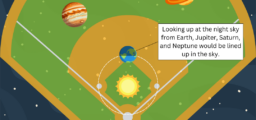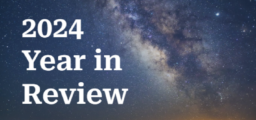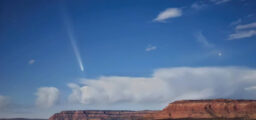Lunar Eclipse Star Party – May 15th in Kanab!
By Rich Csenge, President, Stellar Vista Observatory
Have you ever seen a total eclipse of the moon? It’s a marvelous yet uncommon experience that everyone should aim to witness. For some, to view a total lunar eclipse through an astronomical telescope can elevate the experience to a treasured lifetime memory!
A total lunar eclipse takes several hours to unfold. Stellar Vista Observatory’s Weekly Sky Report, written by John Mosley, provides a fuller explanation. Check your May 5 edition of the Southern Utah News, or visit https://stellarvistaobservatory.org/2022/05/06/sky-report-may-9-15/ to read the report.
On Sunday evening, May 15, from 8:30 PM to 11:00 PM, the Stellar Vista Observatory (SVO) working group will offer residents and visitors in the greater Kanab area the opportunity to view Earth’s moon passing through all the various stages of a total eclipse. The free event will be held at the Jackson Flat Reservoir boat launch parking area, two miles south of the City of Kanab. On this night, the full moon rises above the horizon at 8:22 PM.
During the darkest phase of the eclipse at 10:11 PM while the moon’s light is diminished, known as ‘totality’, the full beauty of a southern Utah starry sky will have emerged. In addition to viewing the moon in totality, SVO’s telescope operators will ready to aim their instruments elsewhere toward some of the wonderful deep sky objects visible in the late spring sky. If you own a telescope or binoculars and would like to use it, or learn more about operating your scope or binocular, be sure to bring it with you.
Should adverse weather conditions emerge on May 15, visit the observatory’s website for an update. https://stellarvistaobservatory.org/
Heads Up! On the night of May 30th, around 11 PM Mountain Daylight Time in Kanab, one of the most fantastic experiences in night sky watching could unfold across North America and may be visible from southern Utah. It’s a “meteor storm”, where as many as 1,000 meteorites be seen in a single hour! This occurrence would be an unusual episode of the Tau Herculids meteor shower, which derives from the breakup in 1995 of the Comet 73P/Schwassmann-Wachmann 3.
Meteor storms are quite difficult to predict with a high degree of accuracy and precise timing. That’s because they consist of groupings of tiny particles moving at high speeds through space while crossing the path of Earth’s orbit. Watch these pages later this month for more information about this potentially highly unusual episode of the Tau Herculids!






Comments are closed.